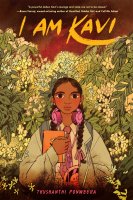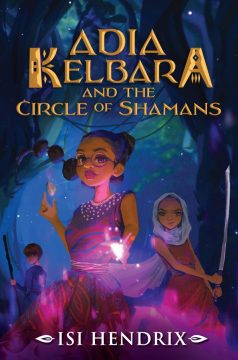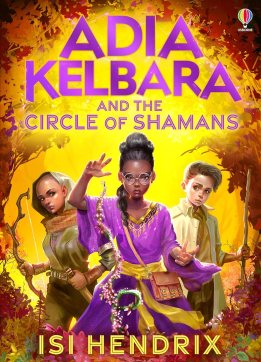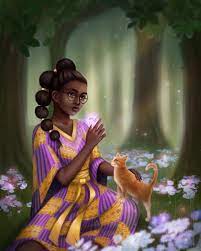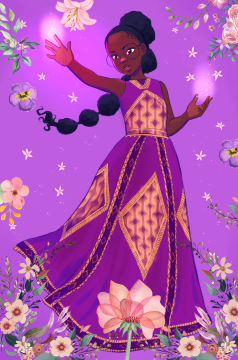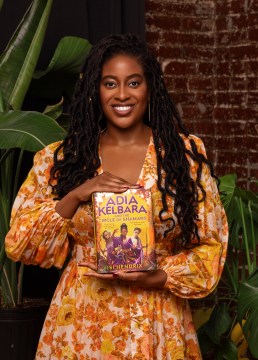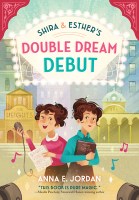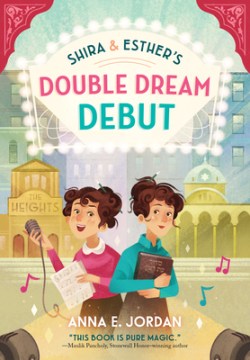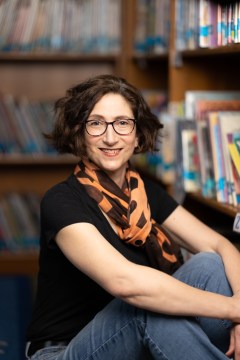
I’m so excited to be able to interview debut author Thushanthi Ponweera today for the WNDMG Wednesday blog. Thushanthi’s new book is I AM KAVI (Holiday House) and it launched on September 19, 2023
I am super in love with this gorgeous novel in verse, as I am also a fellow author of a verse novel coming in 2024 and I just adore poetry! I have read an ARC of this book, and I have to say, the book is stunning, poetic, and absolutely heartfelt in every way. And it is a much-needed book highlighting a diverse author and story that is so important.
I encourage everyone to buy a copy for themselves and their classrooms and libraries.
About I AM KAVI
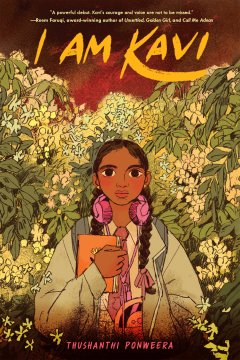
Description taken from online:
Caught between two worlds- a poverty-stricken village and a fancy big-city school—a young Sri Lankan girl must decide who she really is and where she really belongs.
1998, Colombo. The Sri Lankan Civil War is raging, but everyday life must go on. At Kavi’s school, her friends talk about the weekly Top 40, the Backstreet Boys, Shahrukh Khan, Leo & Kate… and who died–or didn’t–in the latest bombing. But Kavi is afraid of something even scarier than war. She fears that if her friends discover her secret–that she is not who she is pretending to be–they’ll stop talking to her.
I want to be friends with these / happy, / fearless, / girls / who look like they / belong.
So I could also be / happy, / fearless, / and maybe even / belong.
Kavi’s scholarship to her elite new school was supposed to be everything she ever wanted, but as she tries to find some semblance of normalcy in a country on fire, nothing is going according to plan. In an effort to fit in with her wealthy, glittering, and self-assured new classmates, Kavi begins telling lies, trading her old life–where she’s a poor girl whose mother has chosen a new husband over her daughter–for a new one, where she’s rich, loved, and wanted. But how long can you pretend to be someone else?
This dazzling novel-in-verse comes from an astonishing new talent who lived through the civil war herself. Perfect for fans of Jamine Warga, Supriya Kelkar, and Rajani LaRocca, I Am Kavi centers a powerful South Asian voice, and stars an unforgettable heroine each and every one of us can relate to.
Interview with Thuhshanthi Ponweera
I loved getting to talk to Thushanti about her new book I AM KAVI and I think you will enjoy meeting her and Kavi as well.
SSS: What a gorgeous cover that conveys so much power! Who was the artist and anything readers should know about the beautiful artwork?
TP: I was equally blown away by the cover and I need to credit my publisher, Holiday House, for having the perfect vision for it. The artist is Emilia Niwa, who is a Japanese-Australian artist. I think she did such a great job in capturing the essence of Kavi! Initially, I initially didn’t like the fact that Kavi was wearing a jacket, which is uncharacteristic of a Sri Lankan child, but then I wove that detail into the manuscript to make it work!
SSS: Love that!
What is the inspiration behind I AM KAVI?
TP: There is a lot of inequality in Sri Lanka which I was made aware of from a very young age. My parents always made sure to teach me that we had so many privileges that many in the country didn’t have access to, especially during the war, like an undisturbed education or a family that could stay together. Sadly, it is no better or is perhaps worse now. Or maybe it’s the adult lens through which I now view things. These disparities make me very sad/angry and I think channeling that into my writing is how I deal with it.
SSS: I am so sorry. As a Syrian American, reading this story broke my heart- as I know what it is like to feel heartbroken at seeing your homeland plunged into war and feeling so helpless. What was it like to draw on memories and experiences of living through the war as you wrote?
TP: I’m sorry you have felt that pain but I understand. Drawing on those memories as an adult was quite a difficult experience since it was armed with all the adult knowledge and hindsight about why and how the war happened and all its repercussions, which I write about in my author’s note at the end of the book. I wrote I Am Kavi with a renewed understanding but also a renewed sense of heartbreak and disgust. Wars are horrible, no matter where they take place.
SSS: Completely agree.
How is Kavi as a character similar to you? How is she different?
TP: Kavi is very introspective and thoughtful and she is constantly analyzing the behaviors of those around her. She also is sensitive and is quick to jump to the conclusion that she is to blame. These are traits familiar to me. But unlike me, she is brave, outspoken, and adaptable. Maybe these are things I wish I was!
SSS: The subject of belonging is important in the book—can you talk more about how Kavi struggles to belong in her school- and what it means to belong?
TP: Belonging is a theme in this book, and it starts with Kavi feeling like she no longer belongs in her family. So when it comes to fitting into her new life in her new school she is determined to not struggle, because she is so desperate to fit in to compensate for feeling left out at home. For Kavi, this is an exciting challenge and it goes smoothly…till it doesn’t! But really, it’s more about her struggle to feel she belongs with the person who matters the most to her–her Amma (mother). I think one’s own family is where belonging makes the biggest difference, especially at that age.
SSS: Absolutely!
Diverse books are so important (and a passion of mine!). How does culture and faith play a role in your book and in Kavi’s life?
TP: Although Sri Lanka as a whole is a very underrepresented country in children’s literature in the US, it is a very diverse country in itself and is made up of multiple ethnicities, faiths, beliefs, cultures, and traditions which is amazing! However, Kavi hasn’t had a chance to be exposed to all of that as she is from a village that is predominantly Sinhalese and Buddhist, which is a reality in the more rural parts of Sri Lanka. Even her school in Colombo possibly has mostly kids from the same background, which is unfortunately the case in many schools in the country which are often segregated by gender and/or language, which in turn segregates children according to their culture and faith. So in this book, I tried to represent that accurately as it is historical fiction.
SSS: Love that.
Will there be more Kavi in the future?
TP: I would love there to be! Maybe a spin-off? It all depends on how well the book is received and what my editor thinks!
Writing Process
SSS: How did you first discover poetry? Was it love at first sight? (I personally loved poetry from the moment I read poems in Elementary!!)
TP: I attended private speech & drama lessons as a child, and I was lucky to have some wonderful teachers who shared some amazing prose and poetry that I wouldn’t have read otherwise. This is how I learned that not all poems have to rhyme! As a teenager, I used to write (bad) poetry and I guess I slowly got better at it? I still wouldn’t call myself a “proper” poet because my poetry is straightforward and easy to understand! But this makes it perfect for verse novels and storytelling.
SSS: As a fellow verse novelist, I am curious- did this book start out in poetry? (My own book began as prose before I realized verse was what I felt worked better).
TP: Yes it did. I had recently discovered verse novels and had decided to try writing one!
SSS: Any advice for fellow middle-grade authors? For poets?
TP: Can I combine the two and offer some advice for middle-grade authors attempting a verse novel?! I would say, don’t be intimidated by it. And if you’re an underwriter, maybe it’s because the story can be told in verse. Stories with strong character arcs are best suited for this style as you can really hone in on the protagonist’s thoughts and personal experiences. Try it!
Bonus!
SSS: Bonus question! Is there anything I haven’t asked that you’d like to share with us?
TP: Yes! And that is the fact that I often feel so removed from my debut publishing experience as I’m so far away! So I’d love it if readers share pics of my book out in the wild and message me if they loved my book, especially younger readers.
Thank you so much for this interview, I really enjoyed myself!
Thank you so much Thushanti for answering my questions! I hope everyone picks up a copy of your beautiful book.
Readers: Check out some Back to School books here!
About Thushanthi Poonweera:

Thushanthi Ponweera is an author and poet from Sri Lanka. Before daring to follow her dream of being published, she was a marketing specialist and entrepreneur. Her writing reflects the frustration she feels at the inequality and injustice she sees around her and the deep love she has for her island home. After having lived all her life in Colombo, Thushanthi recently moved to Qatar with her husband and two children. I Am Kavi is her first novel.
Keep up with Thushanthi:
